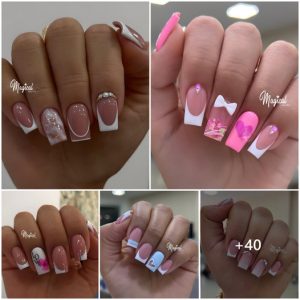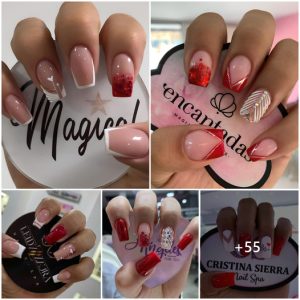An aircraft carrier, one of the best organized places you’ve ever seen.
The nearly 5 500 crew members of an aircraft carrier are there for one reason: to reliably get aircraft into the air and retrieve them safely at the end of their mission.
It comes very precisely because if one person is not paying attention, things could go very wrong, resulting in serious accidents.

For takeoff and landing to succeed, they must coordinate well and perform each action in the correct order.
Because the sound of an aircraft is very loud, communication is only through hand gestures.
What do the many hand gestures that aircraft carrier crew members use to communicate mean?
Because of the large number of people and moving parts involved in the process of takeoffs and landings on the enormous warships, a well-defined system must be put into place to reduce the likelihood of errors that could have potentially catastrophic consequences.
The United States Navy employs a method of color coordinating the roles of different crew members by assigning specific colors to the crew members helmets, coats and vests.
This method eliminates any confusion regarding who is responsible for whose tasks, even though certain colors represent more than one task.
The categories help ensure that everything runs properly and the high pressure environment of an operational aircraft carrier.
The crew members who wear brown are the unit or air wing plane captains and air wing line leading petty officers.
The captains oversee their planes, including maintenance, launch and recovery, while the petty officers are more involved in the hands-on leadership of the unit.
The Different Colors on the Aircraft Carrier
Before we get to the hand signals, we need to explain what the different colors on the aircraft carrier mean.
Yellow Uniforms
Yellow uniforms are issued to personnel involved in the management of aircraft while they’re on the deck.

This personnel includes aircraft handling officers, catapult and arresting gear officers and plane directors.
Those dressed in yellow are in charge of directing those wearing blue to handle the aircraft, operate the aircraft elevators and tractors and communicate with the other crew members.
The crew members who wear green uniforms are responsible for performing some of the most difficult and hazardous tasks on deck.
These include hook runners, responsible for ensuring that the wires on the ship are rooted to the appropriate locations, and those who maintain the ship’s catapult and arresting gear.
Other crew members on the flight deck, such as photographers, mates and helicopter signal enlisted soldiers, are required to wear green uniforms.
The red crew members include those who manage the aircraft’s weaponry by moving, mounting and arming the aircraft.
This can often mean moving missiles weighing up to 500 pounds on their shoulders to transfer them to the correct plane.

Officers who deal with mail freight passengers and landing signal officers who assist approaching planes in landing on deck all wear white uniforms.
Those who examine quality and safety, conduct inspections, and our medical crew also wear white.
The Hand Signals
Now that you know the roles of the different shirt colors on the flight deck, let’s talk about the hand signals these crew members use to direct the operations on a flight deck.
Following the beginning of the flight, when the pilot indicates that he’s ready to take off, he will give the plane captain the thumbs up signal.

After that, the plane’s captain and the pilot will wait in the cockpit until someone wearing a yellow shirt arrives to take command of the aircraft.
An aircraft will remain stationary on the flight deck unless a yellow shirt controls it.
These directors will always be there to regulate the movements of the aircraft, regardless of whether the aircraft is taxing or being towed.
All signals to the pilots will be communicated above the waist, while those to be communicated to the other flight deck members will be done below the waist.
The yellow shirt will first verify that the signal to begin flying has been given, and then they will transmit the signal to break down the aircraft, the arms are being moved in sweeping motions, which indicates that the chocks and chains will be removed from the airplane and that it will only be kept in position by the brakes following the disassembly of the aircraft.
Taxi signals are utilized to guide the aircraft around the flight deck.
In the world of aviation, these gestures are standard: waving arms to indicate taxiing and bending one arm to signify turning.


All the rotations will be made when the engine is idle to prevent the aircraft from sweeping large amounts of thrust and throwing people overboard.
Yellow shirts are not permitted to move when they’re taxiing an aircraft.
The handler in flight deck Control pre-arranged the aircraft’s path, direction and sequence as they taxi to one of the four catapults.
When the aircraft has arrived at the catapult, it’ll get the signal to spread its wings, which consists of a sweeping motion of the arms from the chest to the position where they’re fully stretched outward.
The director will then extend one arm forward to indicate that it’s time to drop the launch bar.
The aircraft will now taxi very gently and precisely so that the launch bar and the Catapult shuttle may be lined up properly.
An aircraft that has been equipped with munitions will need to be armed right before it’s allowed to settle into position on the cat.
During this potentially life-threatening situation, an ordy, also known as a red shirt, will provide the hands up signal to guarantee that both pilot’s arms are in full view at all times.
After the aircraft has been armed, it can taxi into the catapult and begin taking tension.
The Take Tension Signal
A significant amount of power is required to overcome the resistance imposed by the hold back fitting located on the rear of the nose gear during Taxi. the take tension signal comes up next, and it’s one of the ones that may be seen in cruise films the most frequently.
The person wearing the yellow shirt will first look in both directions before simultaneously doing two hand signals.

The one hand will be lifted with the palm facing outward, to signify off the brakes, while the other hand will be stretched out in front of the body to indicate taking stress.
After getting into position, the jet squats down until it’s at the muzzle of a loaded pistol.
After that, the final director will transfer control to the shooter, who will frantically wave his hand for the run-up signal.
The pilot will then wipe out the controls, set the military power and perform a last check of the instruments.
The shooter will then return the salute point to each of the elements that were on his final checklist, tap the deck and point forward as the signal that the launch is about to occur.
What about the Hand Signals When an Aircraft Is About To Land
What about the hand signals when an aircraft is about to land?
After touching down, the signals become significantly less complicated.
When the pilot approaches the landing spot, he will see a yellow shirt standing to his right, tugging one of his thumbs backward to indicate that he should reduce the throttle.
After the trap, after a brief pause, the hookup signal is communicated by bringing one thumb into the open palm of the other hand.

After that, the pilot will give the flight deck chief either a thumbs up or a thumbs down to indicate whether the jet is up for maintenance or down for maintenance.
After that, the plane will perform a series of taxiing maneuvers until the person in the yellow shirt receives the same signal as before to install the chocks and chains.
After that, the plane will be turned over to the plane captain, and that will be all for today’s video.
Thanks for staying tuned.
Let us know what you think of this topic in the comments.
Don’t forget to hit that subscribe button and that notification bell so you can always get to watch more amazing videos like this one.





